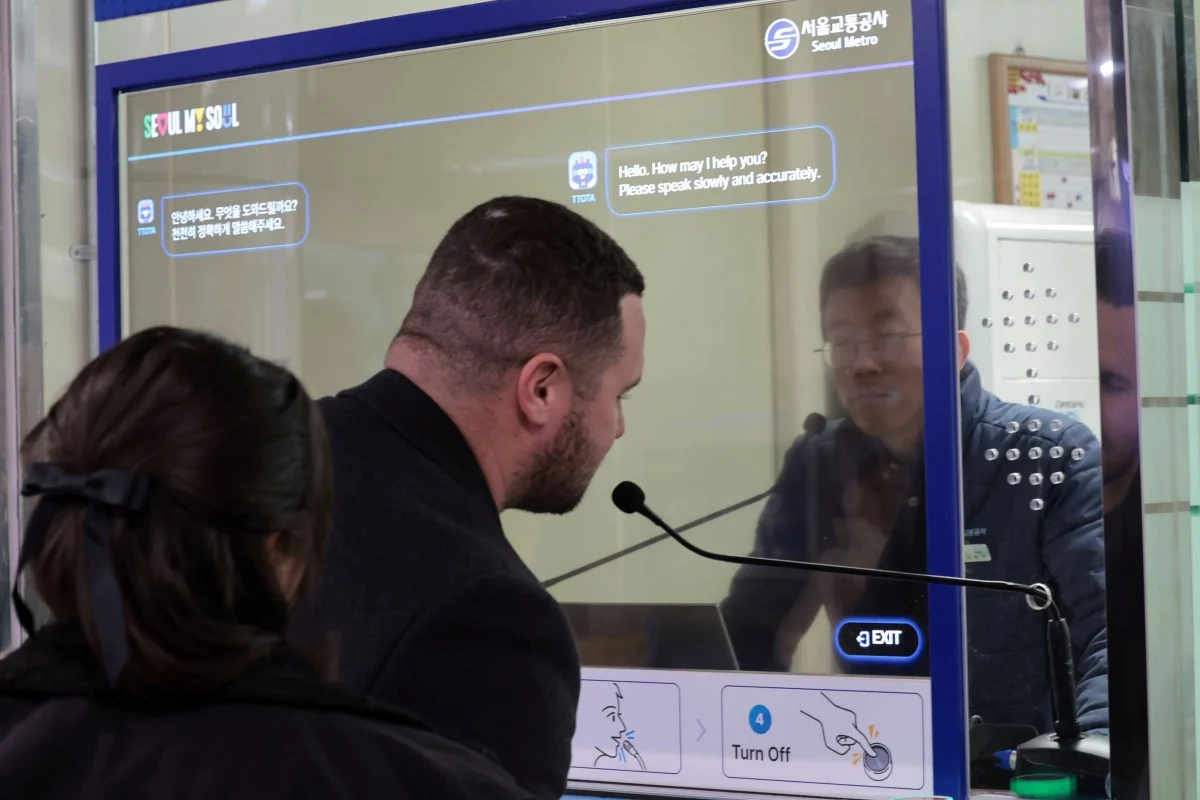Table of Contents
Foreign tourists visiting Seoul can now enjoy a new AI translation service at Myeongdong Station, one of the busiest subway stations in the city. The service, which started on a trial basis on December 4, allows tourists and station staff to communicate in their native languages through a transparent OLED display.
How the AI translation service works
The service uses artificial intelligence (AI) to translate speech and text between 13 languages: Korean, English, Japanese, Chinese, Vietnamese, Thai, Malay, Bahasa Indonesia, Spanish, French, German, Arabic and Russian. The service has touch screens and wired and wireless microphones for easy input and output.
The transparent OLED display also serves as a multifunctional information kiosk. It can show the subway route map and the fare prices, as well as information about T-Locker and T-Luggage, Seoul Metro’s services for storing goods and luggage at the station.
Why the AI translation service is needed
Seoul Metro, the operator of the subway line, said the AI translation service aims to enhance the convenience of foreign tourists and improve the on-site responses from station staff. The service can help tourists overcome language barriers and access subway information more easily and conveniently.
Seoul Metro chief executive Baek Ho said, “By introducing this system, we expect foreigners of various nationalities visiting Korea to easily and conveniently receive subway usage information.”
What the future plans are

The AI translation service is currently undergoing a four-month pilot scheme at Myeongdong Station, which was chosen because of its high volume of foreign tourists. The service is available at the customer safety office’s entrance.
Seoul Metro conducted on-site tests with foreigners in November and received positive feedback. The service has also been improved with directional microphones and noise removal technology to enhance voice recognition, especially for proper nouns such as station names.
If the pilot period is successful, Seoul Metro plans to expand the service next year to five more popular stations with foreigners: Seoul Station, Itaewon Station, Gimpo International Airport Station, Gwanghwamun Station, and Hongik University Station.
How many people use the Seoul subway?
The number of people who use the Seoul subway varies depending on the source and the year. However, some estimates are as follows:
- In 2017, the total number of subway passengers in Seoul was about 1.9 billion, which means an average of 5.15 million per day.
- In 2019, the average number of subway passengers per day was 7 million.
- In 2020, the number of subway passengers decreased by 25.6% due to the COVID-19 pandemic, reaching 4.4 million per day.
Therefore, it can be said that the Seoul subway is one of the most widely used public transport systems in the world, serving millions of people every day.
What are some other services provided by Seoul Metro?
Some other services provided by Seoul Metro are:
- Free WiFi is accessible in all stations and trains.
- Platform screen doors for safety and comfort.
- Virtual mart for smartphone users at Seolleung station.
- T-Locker and T-Luggage, services for storing goods and luggage at the station.
- Subway etiquette with Bread Barbershop characters on YouTube.
What are T-Locker and T-Luggage services?
T-Locker and T-Luggage are Seoul Metro services for storing goods and luggage at subway stations. T-Locker is a self-service locker that you can rent and store your belongings for up to four hours for a fee. T-Luggage is a luggage storage facility that also provides delivery to your destination. You can find the locations and prices of these services using the “T locker” mobile app.
T-Locker and T-Luggage are available at some of Seoul’s most popular subway stations, including Myeongdong Station, Seoul Station, Hongik University Station, and Gimpo International Airport Station. These services will allow you to enjoy your trip to Seoul without having to carry your luggage.